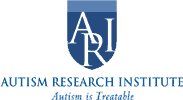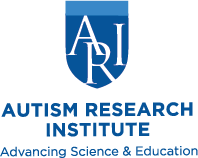Published: 09/30/2015
 Dr. Casanova completed his residency training in neurology and then spent 3 years doing a fellowship in neuropathology at The Johns Hopkins Hospital. During his stay at the Johns Hopkins Hospital, Dr. Casanova was in-charge of Pediatric Neuropathology. He spent several years as Deputy Medical Examiner for Washington, D.C., where he gained valuable experience in the post-mortem examination of Sudden Infant Death Syndrome and child abuse. His expertise in the field was recognized by honorary appointments as a Scientific Expert for the Armed Forces Institute of Pathology and as a Professorial Lecturer for the Department of Forensic Science at George Washington University. Dr. Casanova spent 8 years helping to establish 2 of the most successful brain banks in this country: The Johns Hopkins Brain Resource Center (3 years) and the Brain Bank Unit of the Clinical Brains Disorders Branch at the National Institutes of Mental Health (5 years). Dr. Casanova is well published in a multitude of postmortem techniques including neuronal morphometry, immunocytochemistry, neurochemistry, and autoradiography. Dr. Casanova has had over twenty years of experience in the neurosciences. Although trained in the classical methods of neurology and neuropathology, his interest has gradually shifted towards the study of abnormalities of cortical circuitry. His research has focused on the cell minicolumn, a vertical unit of 80 to 100 neurons having a common latency of response to stimulation. Using computerized imaging analysis he has established the anatomical validity of the cell minicolumn. His earlier work has reported interhemispheric differences in the morphometry of minicolumns that could provide for the speciation of hominids. His most recent studies have investigated the presence of abnormalities of minicolumnar organization and lateralization in the brains of patients who exhibit language disturbances, including autism, Asperger’s syndrome, and dyslexia. He is internationally known for his work in autism.
Dr. Casanova completed his residency training in neurology and then spent 3 years doing a fellowship in neuropathology at The Johns Hopkins Hospital. During his stay at the Johns Hopkins Hospital, Dr. Casanova was in-charge of Pediatric Neuropathology. He spent several years as Deputy Medical Examiner for Washington, D.C., where he gained valuable experience in the post-mortem examination of Sudden Infant Death Syndrome and child abuse. His expertise in the field was recognized by honorary appointments as a Scientific Expert for the Armed Forces Institute of Pathology and as a Professorial Lecturer for the Department of Forensic Science at George Washington University. Dr. Casanova spent 8 years helping to establish 2 of the most successful brain banks in this country: The Johns Hopkins Brain Resource Center (3 years) and the Brain Bank Unit of the Clinical Brains Disorders Branch at the National Institutes of Mental Health (5 years). Dr. Casanova is well published in a multitude of postmortem techniques including neuronal morphometry, immunocytochemistry, neurochemistry, and autoradiography. Dr. Casanova has had over twenty years of experience in the neurosciences. Although trained in the classical methods of neurology and neuropathology, his interest has gradually shifted towards the study of abnormalities of cortical circuitry. His research has focused on the cell minicolumn, a vertical unit of 80 to 100 neurons having a common latency of response to stimulation. Using computerized imaging analysis he has established the anatomical validity of the cell minicolumn. His earlier work has reported interhemispheric differences in the morphometry of minicolumns that could provide for the speciation of hominids. His most recent studies have investigated the presence of abnormalities of minicolumnar organization and lateralization in the brains of patients who exhibit language disturbances, including autism, Asperger’s syndrome, and dyslexia. He is internationally known for his work in autism.


